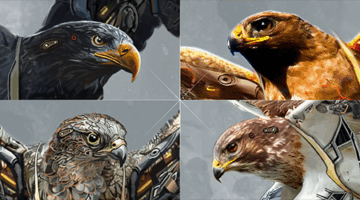
WASHINGTON — The US Air Force recently awarded contracts to five vendors for the autonomy software that will control future drone wingmen, but is keeping details under wraps due to the sensitivity of the technology, service officials said today.
The winners of the first Collaborative Combat Aircraft autonomy contracts are classified but represent a mix of both traditional and nontraditional defense companies, Air Force officials told reporters during a roundtable at its Lifecycle Industry Days conference.
Moving forward, those vendors will face a contest similar to the dronemakers currently battling to build the CCA air vehicle, where they will have to meet certain performance criteria and could potentially be cut as the competition progresses, said Air Force Brig. Gen. Jason Voorheis, program executive officer for Fighters and Advanced Aircraft.
“There will be a down select process based on knowledge gained over time as a function of performance of those autonomy vendors,” he said. “And we will get down to a lower number of those vendors and they will create an autonomy implementation that will be applied to CCA increment 1.”
General Atomics and Anduril won the first batch of CCA air vehicle contracts — known as increment 1 — earlier this year and are currently developing prototypes ahead of a full rate production decision in 2026.
“We’ve also built in very specific touch points, where autonomy and aircraft models are being passed back and forth between the autonomy vendors and their vehicle vendors,” said Col. Timothy Helfrich, Senior Materiel Leader for the Advanced Aircraft Division. “And then the Air Force has an independent way to assess both of those to ensure that they’re working well together.”
Voorheis added that the autonomy work would “merge” with the drone prototypes for fight tests sometime before the production decision.
In addition to the identities of the companies working on the autonomy module, Air Force officials declined to talk about specific schedule milestones associated with the autonomy contract as well as the contract’s value.
“You can think of the mission autonomy as the brain of your autonomous vehicle. It is important that many protections are put around that, which drove the different classification posture,” Helfrich said.
While the Air Force stays mum about the companies working on CCA autonomy, DARPA’s work on the Air Combat Evolution program — and the modified F-16 known as the X-62A VISTA — could provide a clue. Air Force Secretary Frank Kendall flew on the VISTA aircraft this May, which used software from EpiSci, Shield AI and Physics AI to demonstrate how artificial intelligence could autonomously maneuver a plane during a dogfight.
Beyond Autonomy
General Atomics and Anduril may have beat out Boeing, Lockheed Martin and Northrop Grumman to win the first batch of CCA drone prototyping contracts, but a contract for full scale production is not assured.
Voorheis stressed either vendor could be cut if they fail to meet performance requirements, while companies that were not awarded the increment 1 contract will have a chance to jump back into the fight and potentially usurp a full rate production award.
However, he added that it is “equally likely that we will carry both of those vendors” to production, although the contract award may not necessarily be evenly distributed among the winners.
“The degree to which those vendors meet those [performance requirements] within our constraints, we’re likely to work with both [companies],” he said. “There’s a lot of flexibility in the contract mechanism to vary when those awards happen, if one is more advanced than the other in terms of schedule and the quantities. So those are some variables and dials that we have.”
The Air Force is also looking forward to the second increment of the CCA program, having held a recent industry day where the service laid out its current thinking on timelines, desired capabilities and potential tradeoffs.
“The Air Force is working internally over the next several months to hone in on the key attributes — so think requirements — that will be important for increment two, so we can’t really talk about what those are right now,” said Helfrich. “There’s still some somewhat in development and are of a classified nature.”
The Air Force is preparing to award a contract for the concept refinement phase for increment two that will be executed in fiscal 2025. That phase could see the Air Force bring in international partners to shape requirements for the drones or even to enter into coproduction agreements, Voorheis said.
“It will be this fall that we’re able to smoke out what the real interest is from each of our partners and solidify who will and who won’t be participating with us, but you can expect our closest allies to be in that mix for sure,” he said.

